***
Yuck. Let's look at this mess more closely...
There are the potted plants. A few bamboos which were dug in and covered with plastic (which is a great way to overwinter bamboo) and a dappled willow -- that's the plant in the foreground.
Behind that are a bunch of Rudbeckia triloba plants that I want to transplant. These all seeded from one plant that grew in the corner of my veggie bed last year.
There are also weeds -- mainly dandelions, violets, strawnberries, and some grassy weed (or is it a weedy grass?):
There are vines:
There's grass and grassy weeds that have grown into my garlic chives.
There are some plants from the Fall which I didn't remove, like these:
Carrots anyone? I've not yet grown a successful carrot. I tried them in pots last year because of my heavy soil, but they still were too small, or too tough. I probably planted too densely -- as I always do -- then waited too long to harvest. One of my resolutions for this year is to thin everything to the proper spacing.
These big dead stalks are Kale 'Winter Red':
You can also see a large patch of wild strawberry plants there.
As you can see, there's a lot of work to do. Here are the tools I think I'll need:
The most important one is the "scuffle hoe" (looks like a flattened loop of metal), which I just sharpened and cuts through the weed roots on both the push and pull strokes. It's also called an "action hoe" by the manufacturer. Love the way it digs in when sharp!
I started with the Kale, and as I pulled up the first couple of stalks I noticed that the cool internal structure of the stalks was now visible:
Very interesting! Glad I looked before tossing in the bin. The other interesting thing about three of the Kale plants...
...was that they weren't dead! I know Kale is pretty cold-hardy, but we had a really cold Winter this year and I'm shocked that these survived! I'm guessing Kale is a biennial, so it will probably just produce a little bit of foliage and then flower this year. Maybe the foliage will taste terrible, but I hope not, because I love Kale. I'll find out, because I'm leaving these plants alone to see how they do.
I use the scuffle hoe on the strawberries, violets, and grasses, but there are areas that the hoe can't reach, such as between the trellis and fence, where there is about 6" of space:
Plus, do you see the feathery leaves mixed in with the strawberries and mini forest of maple tree saplings? That's my bronze fennel, which sometimes comes back, but definitely reseeds in this area. I love the fennel and don't want to accidentally hoe it out, plus I want the saplings pulled (not cut), so it's time to get in there and weed by hand.
Dandelions I won't cut with the hoe either, because you need to get the taproot out or they'll just regrow. I'll use my narrow trowel to loosen the soil around the dandelion then pull the whole thing out.
Now that's what I call a pulled dandelion!
Here's what you eventually get when you don't get rid of the whole taproot, or if the plant reseeds:
That mass was right up against one of the fenceposts, which made it harder to remove. Looks like about half a dozen plants all jammed together. I think I got them all though.
After much hoeing, raking, and pulling, things are looking pretty good:
I still need to dig the Rudbeckia, but I think I'm ready to plant now. Hooray! Wait, I still haven't completely decided what exactly I'm going to plant this year! I better start thinking.
How long did it take? 1:15
Total time spent on clean-up so far this year: 15:00 (15 hours)

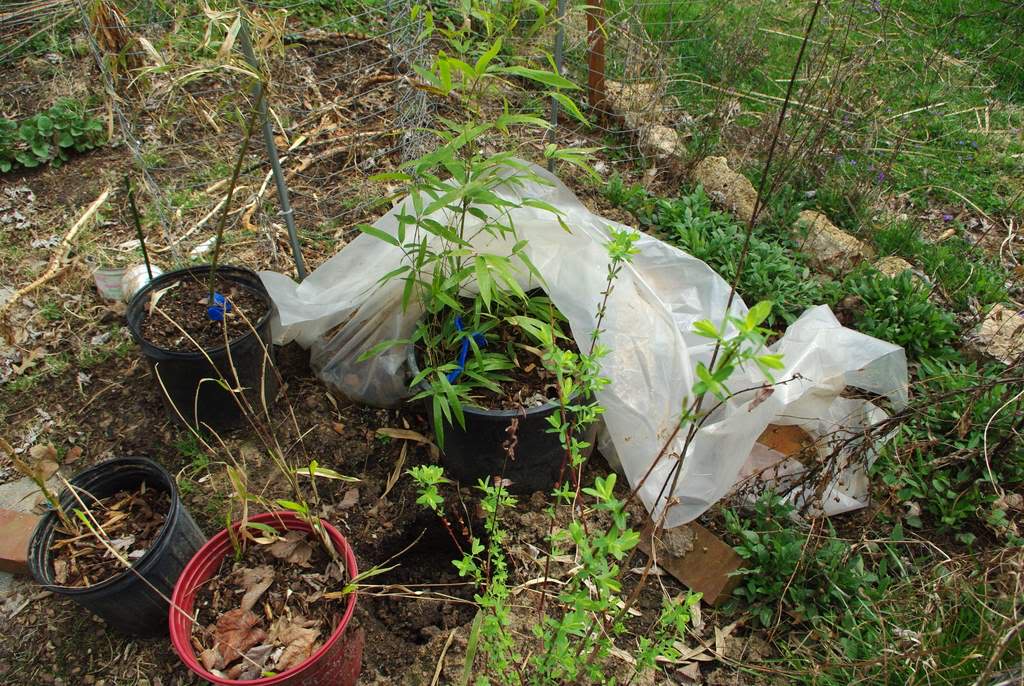

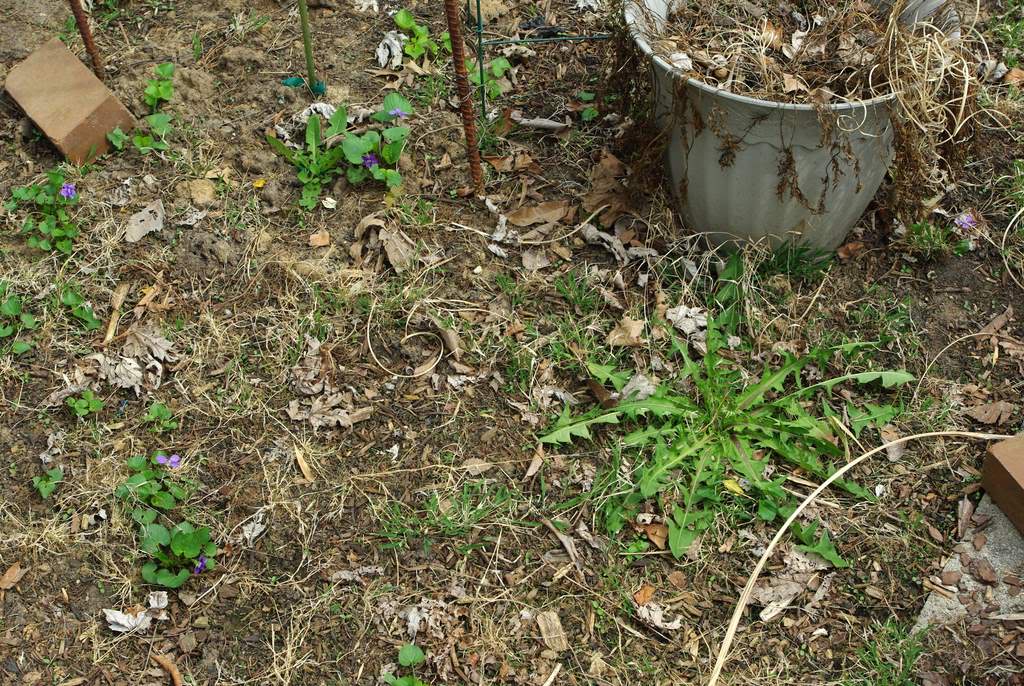
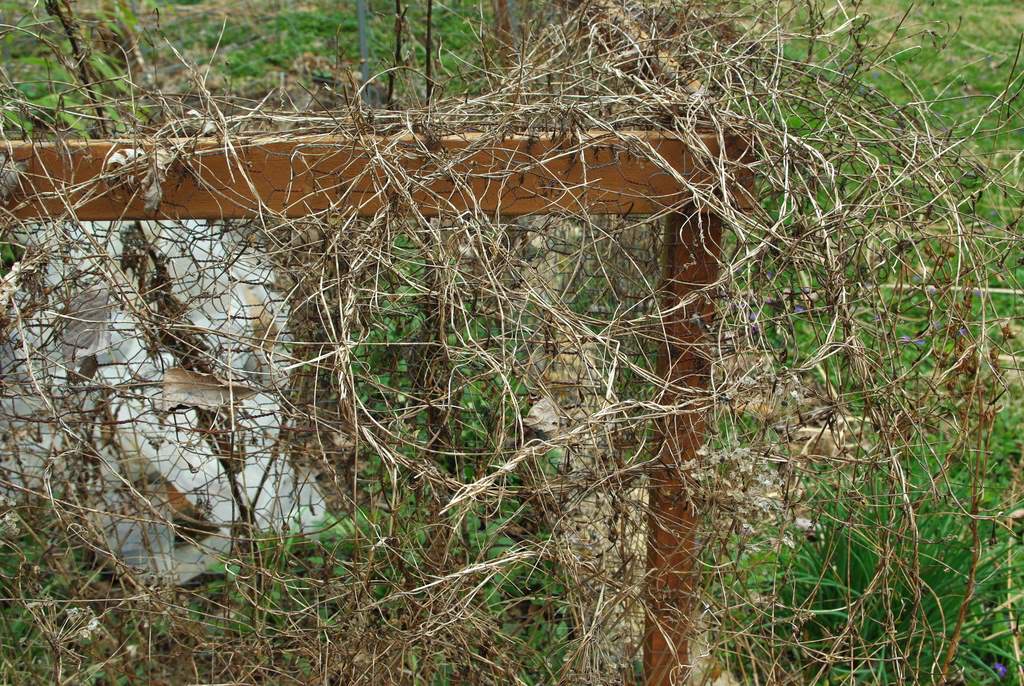



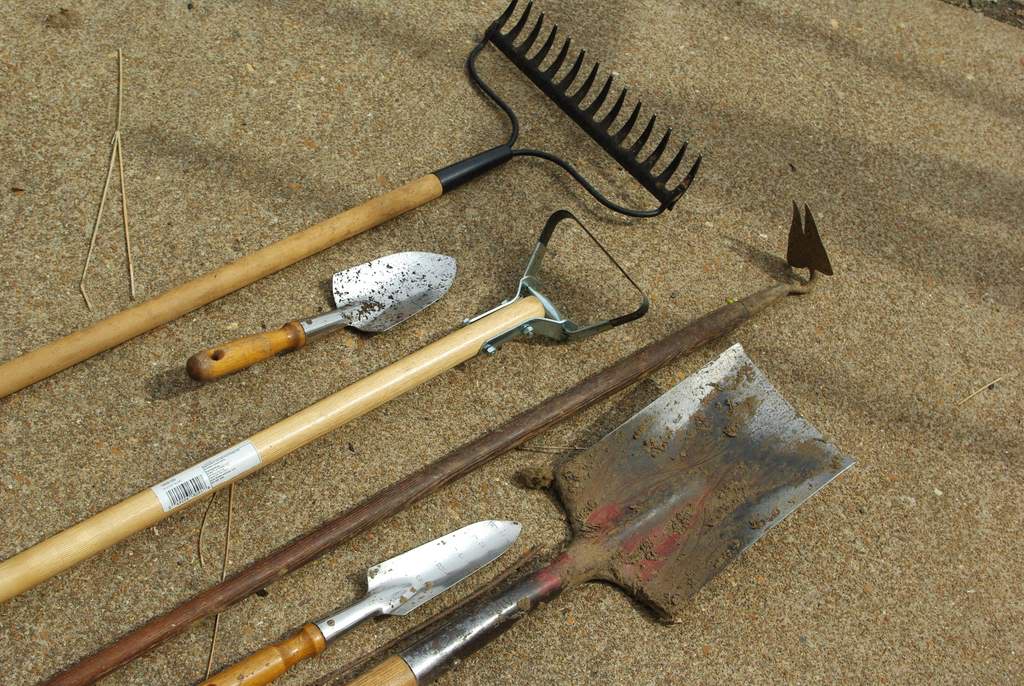
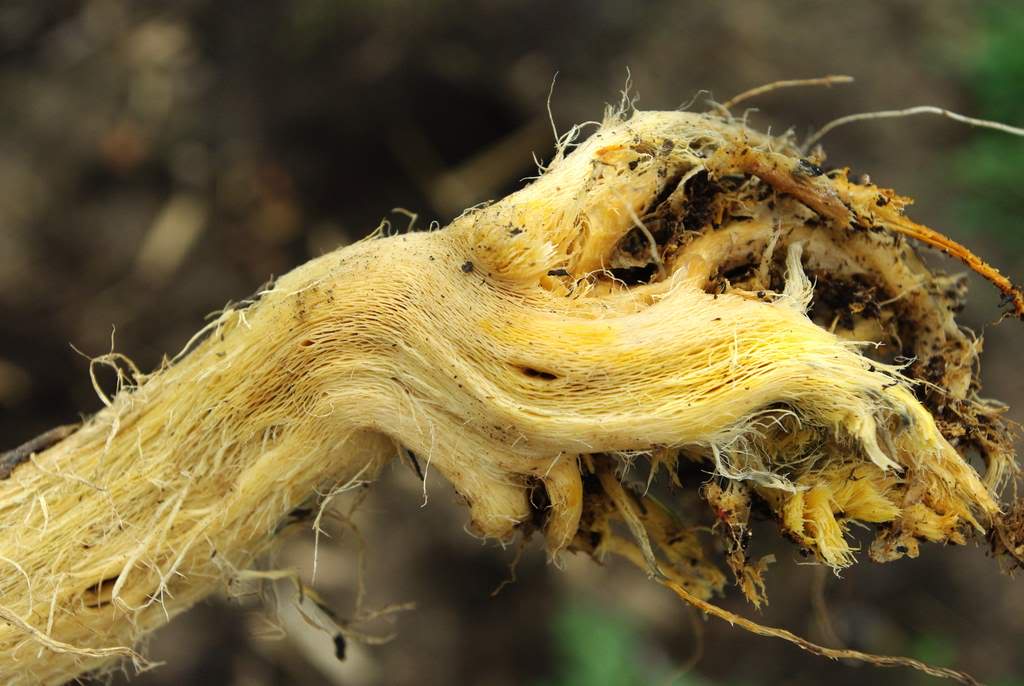

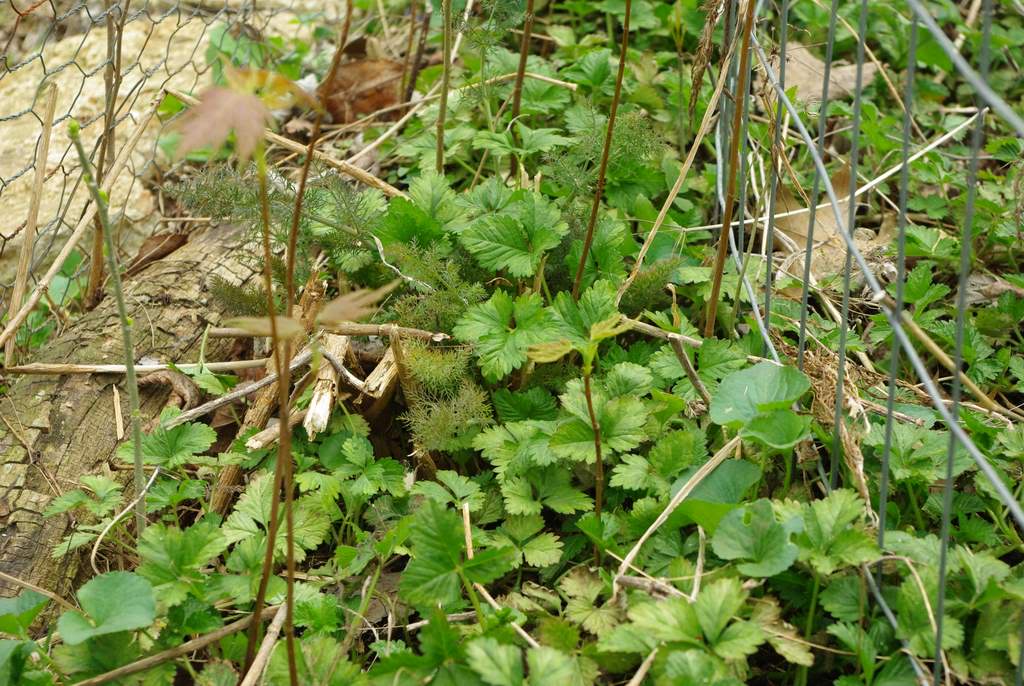
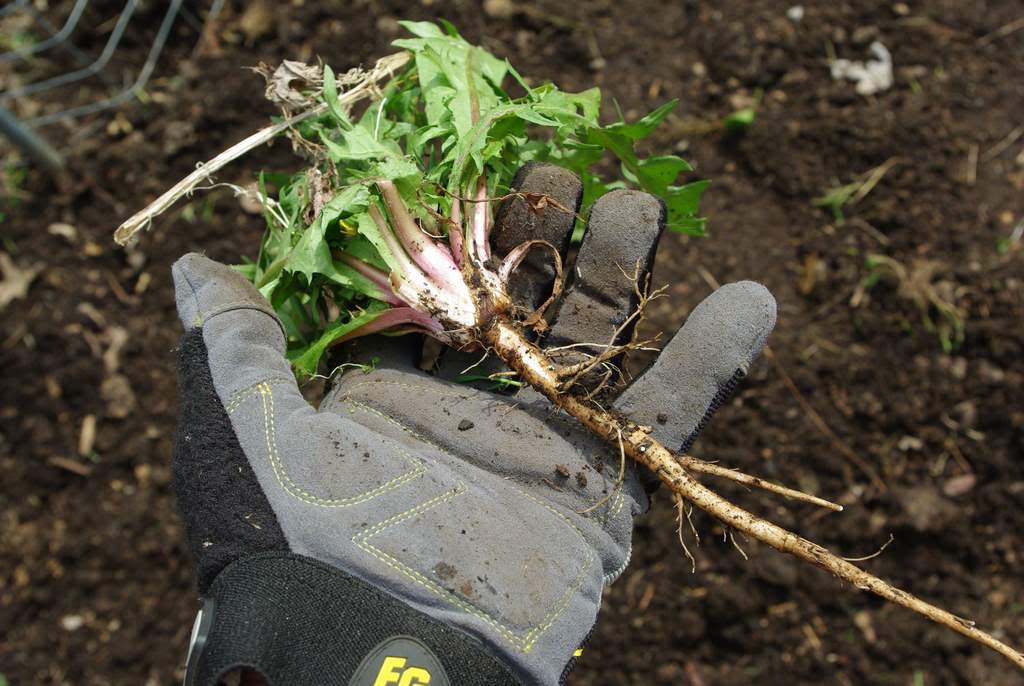
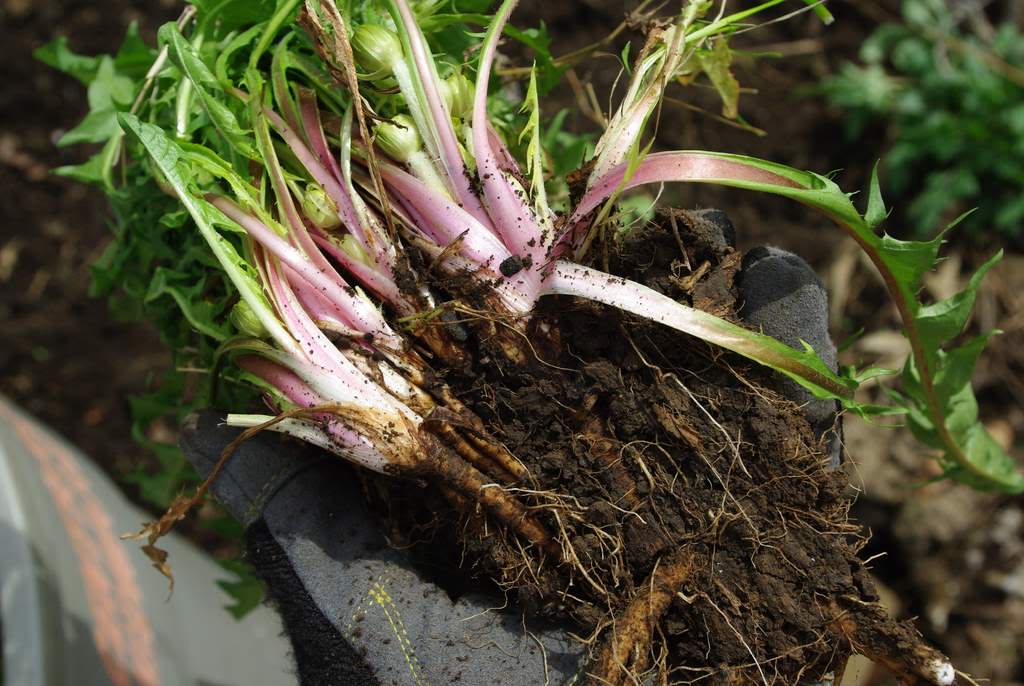
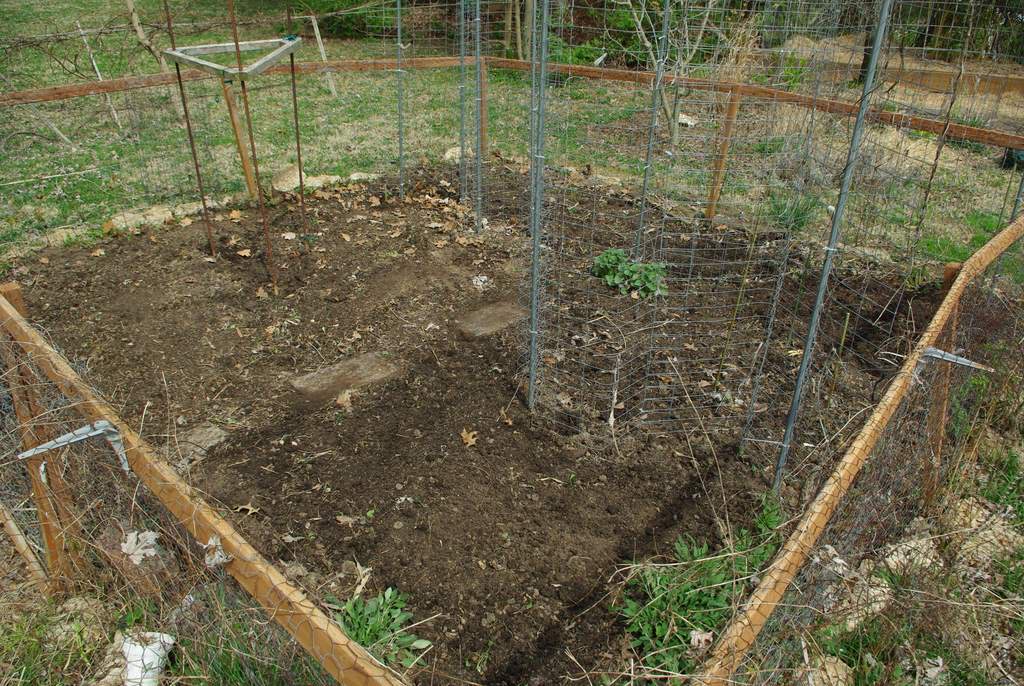
Here in Baltimore today we are getting a soaking rain that is needed. Working in my garden is no longer an option. Instead, I have decided to brows the Internet and have found your blog. I like your images that have given me lots of new ideas to incorporate in my blog. Your blog is informative and engaging. Thank you.
ReplyDelete